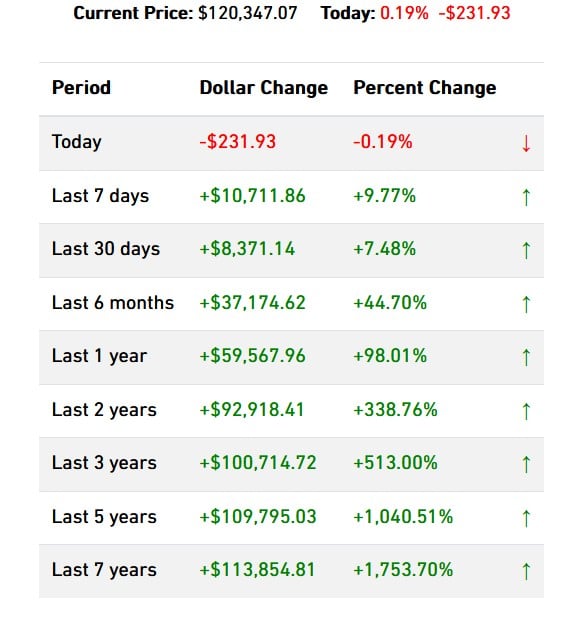- Learn how to invest in cryptocurrency in 2025. Discover strategies and risks and why experts see BTC heading toward $200K.
Cryptocurrency has moved from the fringes of the internet into mainstream finance. Once dismissed as a fad, Bitcoin and Ethereum are now household names, while global institutions, hedge funds, and even governments are exploring digital assets. For new investors, the idea of crypto can be exciting, but it can also feel intimidating and risky.
At its core, cryptocurrency is simply a digital form of money secured by blockchain technology. Unlike traditional currencies, it is not controlled by a central bank. This independence, combined with high return potential, makes it attractive to investors. Yet the same qualities that create opportunity also introduce volatility and uncertainty.
If you’re new to the market, this guide will help you understand how to invest in cryptocurrency step by step, what strategies to consider, and the risks you need to manage along the way.
Why Consider Cryptocurrency as an Investment?
There are several reasons why investors add crypto to their portfolios:
- Growth potential – Bitcoin has risen from less than $1 in 2009 to 120,000 as of today. Ethereum has powered entire industries, from decentralized finance (DeFi) to NFTs.
- Diversification – Crypto often behaves differently from stocks and bonds, giving investors an additional asset class.
- Innovation exposure – Investing in crypto is also investing in the underlying blockchain technology that could reshape payments, contracts, and global finance.
- Accessibility – Unlike private equity or hedge funds, crypto is open to anyone with an internet connection and as little as a few dollars.
However, investors must remember that crypto markets are highly speculative. Prices can rise quickly, but they can fall just as sharply.

Investing vs Trading Cryptocurrency: What’s the Difference?
- Investing means buying coins or tokens with the intention of holding them for the long term, usually years. Investors typically believe adoption will increase over time, driving prices higher.
- Trading is short-term, often involving multiple buys and sells in a day or week to profit from price volatility. Traders rely heavily on charts, technical analysis, and risk management.
Both approaches can be profitable, but they require different mindsets. For beginners, investing is generally more practical than attempting to time every price swing.
How to Start Investing in Cryptocurrency Step by Step
Step 1: Decide How Much to Allocate
Before choosing what to buy, you need to decide how much of your portfolio should be in crypto.
You should keep your crypto exposure between 1–5% of your total portfolio, depending on your risk appetite. For example, if you have a $10,000 investment portfolio, a $300–$500 allocation in crypto is a balanced starting point.
This way, you can benefit from market growth while protecting yourself in case prices collapse.
Step 2: Choose Your Investment Method
There are several ways to invest in cryptocurrency:
Buy Coins Directly
The most common method is to purchase altcoins through a centralized exchange, such as Binance, Coinbase, or Kraken. You can also use decentralized exchanges (DEXs) such as Uniswap or PancakeSwap, where transactions happen peer-to-peer without an intermediary.
Crypto ETFs and Funds
Exchange-Traded Funds (ETFs) allow you to invest in Bitcoin or Ethereum through the stock market. This option appeals to investors who prefer regulated instruments without dealing with wallets or exchanges directly.
Crypto Derivatives
For advanced investors, futures and options contracts let you speculate on crypto price movements. These instruments can amplify profits but also magnify losses.
Stocks in Crypto Companies
You can gain indirect exposure by investing in companies tied to the industry, such as Coinbase (a crypto exchange), Marathon Digital (a mining company), MicroStrategy, or Nvidia (a chip production company for mining and AI).
Step 3: Do Proper Research
Research is crucial. Cryptocurrencies don’t publish quarterly earnings, but there are still ways to evaluate them:
- Whitepaper – the document explaining the project’s purpose and technology.
- Use Case – does the cryptocurrency solve a real problem?
- Team – are the founders credible, with proven experience?
- On-Chain Metrics – transaction volumes, active addresses, and hash rates provide clues about adoption.
- Valuation Ratios – such as the Network Value-to-Transactions (NVT) ratio, which compares network activity to market cap.
If a coin lacks transparency or utility or just relies on hype like PI Coin, among others, it’s often best to avoid it.
Top Crypto Investment Strategies Beginners Should Know
Not every investor approaches crypto the same way. Here are some common strategies:
- Dollar-Cost Averaging (DCA) – investing a fixed amount at regular intervals, regardless of price. This reduces the risk of buying at the wrong time.
- Buy and Hold (HODL) – purchasing and holding coins for years, betting on long-term adoption.
- Profit-Taking – selling portions of your holdings after rallies to lock in gains.
- Lump-Sum Investing – committing a larger amount during market corrections.
For beginners, DCA is often the safest and most consistent approach.
Step 4: Store Your Crypto Safely
You need a crypto wallet to securely hold your assets:
- Hot Wallets (online) – apps like MetaMask or Trust Wallet. Convenient but more vulnerable to hacks.
- Cold Wallets (offline) – hardware wallets like Ledger or Trezor that store your coins offline, offering maximum security.
Remember the golden rule: If you don’t control your keys, you don’t control your coins. Leaving assets on an exchange long term exposes you to risks if the exchange is hacked or goes bankrupt.
Risk Management in Cryptocurrency
Crypto is exciting, but it’s also one of the riskiest asset classes in the world. Smart investors don’t just focus on potential gains, they prepare for losses too.
Practical ways to manage risk include:
- Use stop-loss orders to prevent large drawdowns.
- Diversify across multiple assets, not just one or two coins.
- Take profits gradually instead of waiting for “the top.”
- Stay informed about regulatory changes, security breaches, and industry news that can move markets overnight.
Think of risk management as insurance for your portfolio.
7 Risks You Should Know Before Investing in Cryptocurrency in 2025
Cryptocurrency investing can be rewarding, but it is not without pitfalls. The market has matured compared to a decade ago, yet risks remain high. Whether you are buying Bitcoin, XRP, Solana, or smaller altcoins, understanding these risks upfront will help you make informed decisions and protect your capital.
1. Extreme Volatility
Crypto prices can rise or fall 20–30% in a single day. Even established coins like Bitcoin are prone to sudden pullbacks. This volatility can be profitable, but it can also wipe out unprepared investors.
2. Scams and Fraudulent Projects
From fake exchanges to rug pulls, the crypto space is filled with schemes that prey on beginners. Always verify platforms and avoid projects promising “guaranteed” returns.
3. Technological Risks
Blockchains and smart contracts are still developing. Bugs, coding flaws, or protocol failures can trigger major losses.
4. Hacks and Cybersecurity Threats
Crypto is a target for hackers. Exchanges, wallets, and DeFi platforms have been attacked, leading to billions in stolen funds. Once hacked, recovery is rare. Securing your assets with hardware wallets and strong authentication is essential.
5. Irreversible Transactions
Unlike bank transfers, crypto transactions cannot be reversed. Sending funds to the wrong wallet address or losing your private keys means permanent loss.
6. Regulatory Uncertainty
Governments around the world are still shaping crypto laws. Sudden restrictions, taxation changes, or outright bans can disrupt markets and reduce investor confidence.
7. Liquidity and Limited Utility
While Bitcoin and Ethereum are widely traded, many smaller altcoins suffer from low liquidity. This makes them harder to sell quickly during downturns. Some also have limited real-world use, meaning their value is mostly speculative.
Should You Invest in Cryptocurrency in 2025?
Yes, you should consider investing in cryptocurrency in 2025, but with a well-defined strategy and effective risk management. Today, Bitcoin is trading near its all-time high at $120,000, and market sentiment remains bullish. I speculate that Bitcoin could push toward the $200,000 level in the next cycle.
The appeal lies in crypto’s unique combination of high return potential, increasing institutional adoption, and growing mainstream acceptance. Ethereum continues to expand the DeFi and NFT ecosystems, while new blockchain projects are driving innovation.
That said, prices never move in a straight line. Pullbacks are part of the journey, and volatility can be intense. If you’re new to crypto, the safest approach is to start with a small allocation in established coins, then expand as you gain confidence and knowledge of the market.
FAQs on Investing in Cryptocurrency in 2025
Start small, even $100 is enough to learn how crypto works. I suggest keeping exposure under 5% of your total portfolio.
Both are strong options. Bitcoin is seen as digital gold and a store of value, while Ethereum powers DeFi, NFTs, and smart contracts. Many investors hold both.
Some analysts believe Bitcoin could rally to $200K as adoption grows, but predictions vary. It’s wise to stay cautious and not base decisions only on forecasts.
Use a hardware wallet (cold storage) like Ledger or Trezor for long-term security. Hot wallets are convenient but more vulnerable to hacks.
This article was originally published on InvestingCube.com. Republishing without permission is prohibited.


